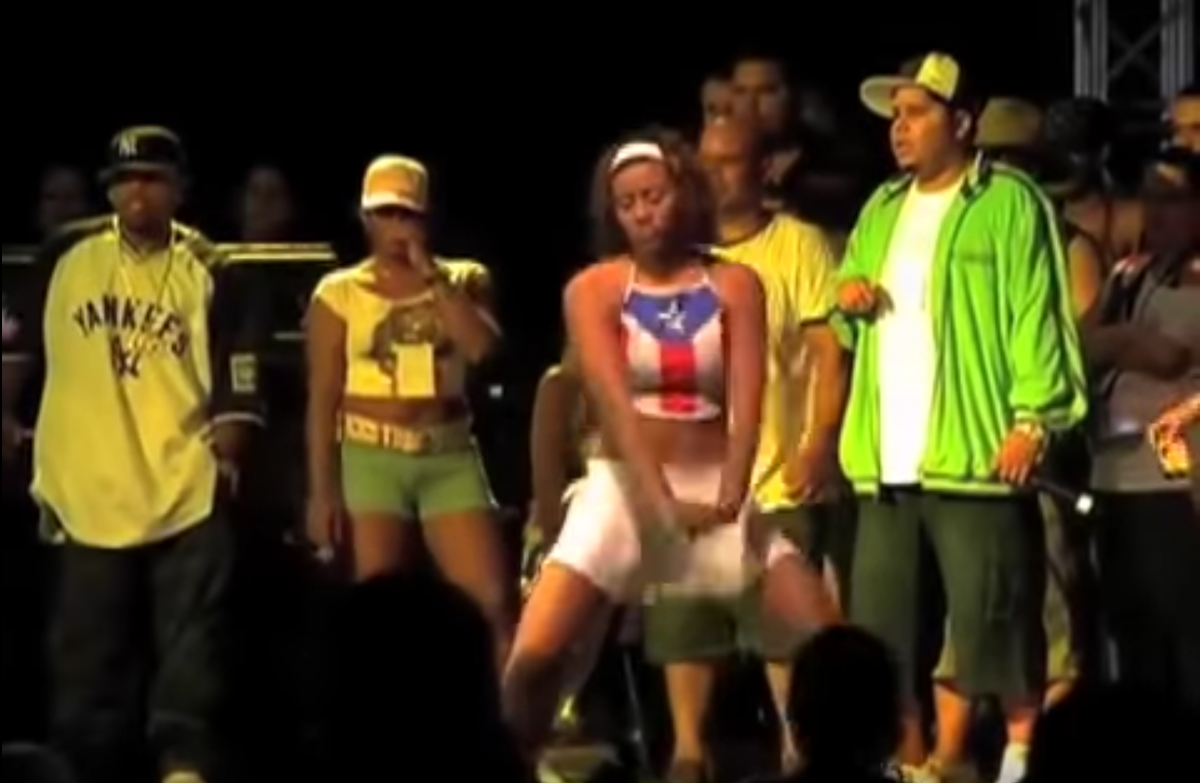
From Hi-fi to Wi-fi
Ethnomusicologist Wayne Marshall examines «Treble Culture» – and not «Bass Culture» as others do. He published his first essay on this topic at the Oxford Handbook of Mobile Music Studies. On Norient he offers insights via five tracks and clips. A must read.
1. The Extraordinary but Everyday Overcompressed Upload
This is, admittedly, an exaggerated example, and it’s hard to imagine anyone enjoying it save from a certain ironic distance. But it’s noteworthy – if not mindblowing – that someone uploaded it at all, and it speaks volumes about the political economy of contemporary music circulation. The intense compression artifacts may or may not be intentional – whether anti-piracy technique or incidental product of crappy software defaults. It reminds me of Jonathan Sterne's contention that the MP3 puts the listener on a «sonic austerity program». Illustrative because so extreme, the warped sound of this clip is deeply familiar to the MP3 generation – like cumulative tape hiss or dusty record crackles for older ears. Due to better bandwidth, the death of DRM, hi-qual darknets, and more liberal leaking practices, such distortions already strike us as «artifacts» in the archaeological as well as audio sense.
2. Necessity Is the Mother of Treblification
Video not available anymore.
Ruff Sqwad's «R U Double F» is a classic of grime’s heyday – a spectacular ascent abetted by digital DIY media yet audibly constrained by issues of access and bandwidth. From the high and midrange synths to the muted drums and flatline vocals, «R U Double F» bears the signatures of its irrepressible production and distribution. London-based music critic Dan Hancox and Bok Bok of the Night Slugs record label once paid tribute to the track as no less than «a 64kbps, straight-off-Limewire, never-released work of genius». Calling it «an mp3 dubplate» whose «grooves have been battered into submission by repeated compression», they highlight its inclusion on Bok Bok's epic Blogariddims mix, 69 Allstars, «because for us fucked-up sounding mp3s were a massive part of listening to music from this era».
3. Fetish as Feedback
Playing on and with the sudden ubiquity of phones as listening devices, and the constraints that accompany such a shift, Portland’s Club Chemtrail commissioned «ringtones» from producers working across the electronic dance spectrum. Sampling actual phone sounds as well as more widely adopting a data-crunched palette, the collection gestures toward an obviously self-reflective, celebratory, and playful side of treble culture via production aesthetics, but it is imperative to note that the phenomenon of making music tailored for phones and other bass-attenuated devices is far more widely dispersed, from U.K. bassline’s doubled and trebled melodies to the rise of brostep’s midrange riffs to the most common filters and synths used in mainstream hip hop and pop.
4. If It’s Got a Good Beat, Who Cares if You Can Barely Hear It?
I love examples like these because they bear witness to people’s willingness to use phones and other mobile but feeble sound systems to provide all the soundtrack necessary to impel a devoted dance. Why not? Here we have two examples from Europe (tecktonic and jumpstyle), but videos of kids dancing to trebly versions of the latest dance-meme-song are a dime-a-dozen. The added attenuation thanks to smartphone recording equipment, and perhaps audio encoding, are just more icing on the trebly cake.
5. Bass as Rare, Personal, Almost Imaginary
Video not available anymore.
he dancing and the general scene here have their charms, to be sure, but the moment at 0:30 when Zhani steps up and her competitor hands her the iPod & earbuds she was wearing so that, presumably, Zhani can dance to the same track, definitely takes the cake. It’s an interesting moment for lots of reasons, not least of which being the way it illustrates an improvised solution to the problem of treble culture. In the absence of a boombox, here are two people dancing for their friends & peers, in public, to music only the dancer can hear. Even the immediate onlookers have to fill in the blank until it can be overdubbed for the YouTube masses!
Biography
Published on May 09, 2014
Last updated on April 09, 2024
Topics
Why does a Kenyan producer of the instrumental style EDM add vocals to his tracks? This topic is about HOW things are done, not WHAT.
How does the artits’ relationship to the gear affect music? How to make the climate change audible?
What is «Treble Culture»? How does what one hears affect what one sees?


